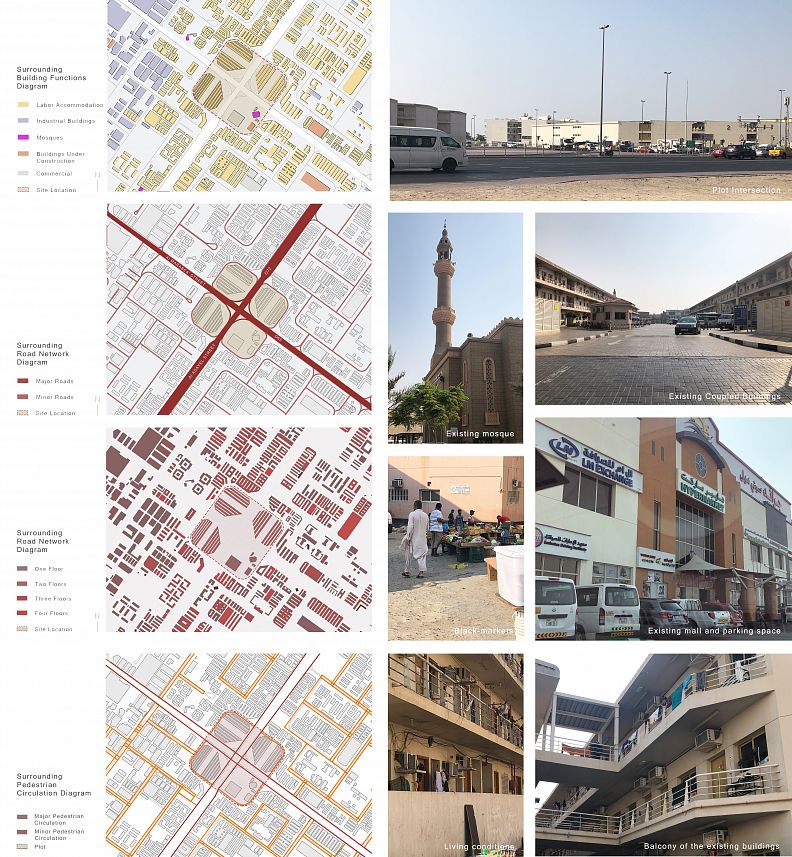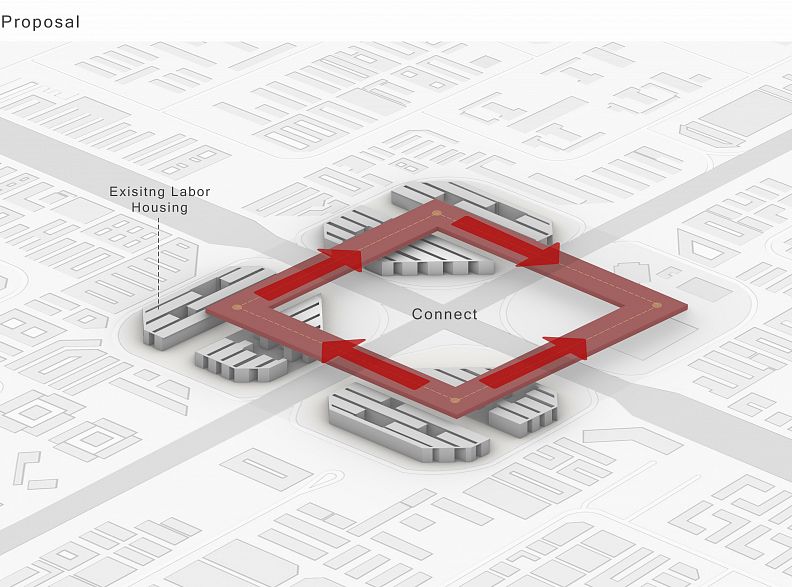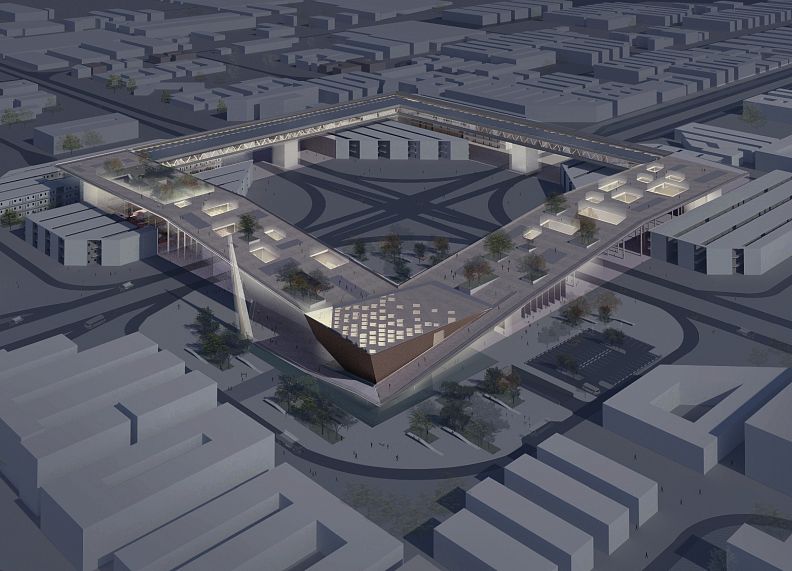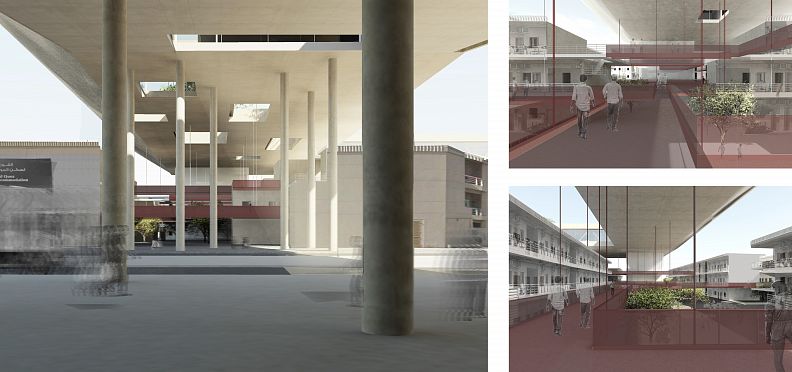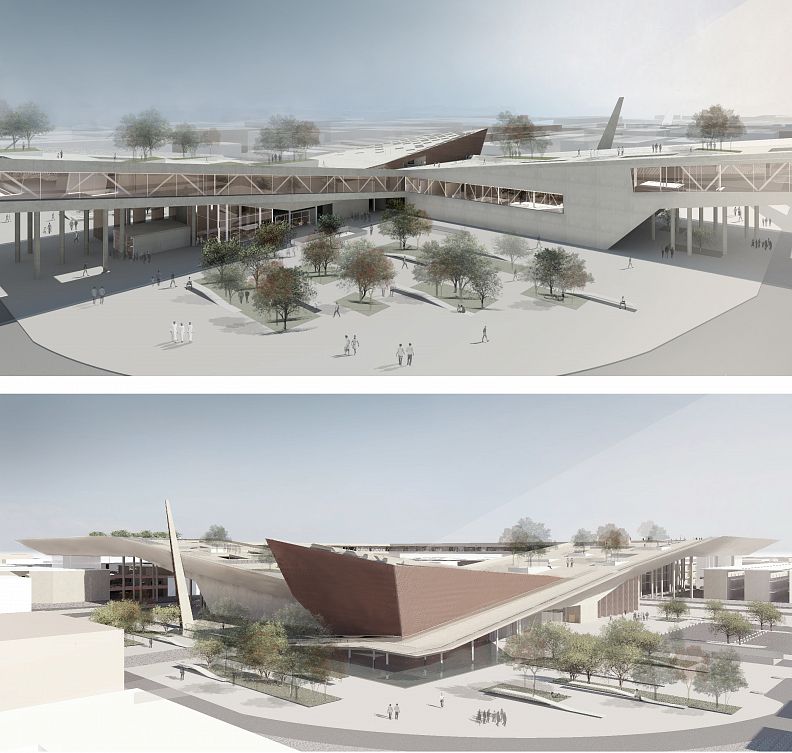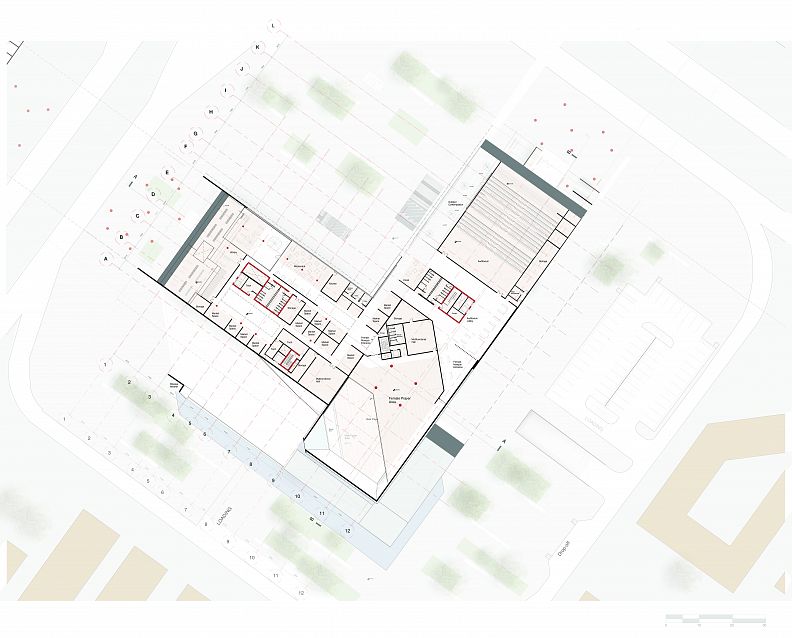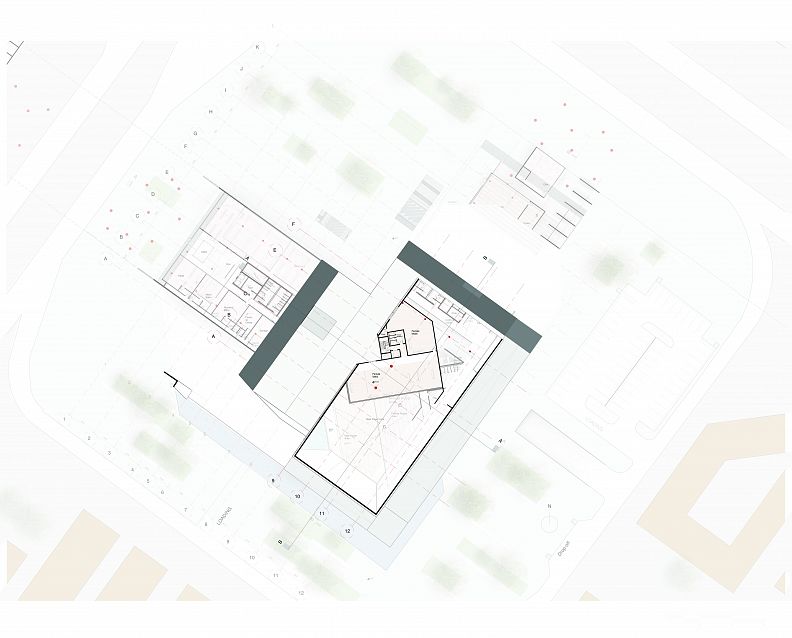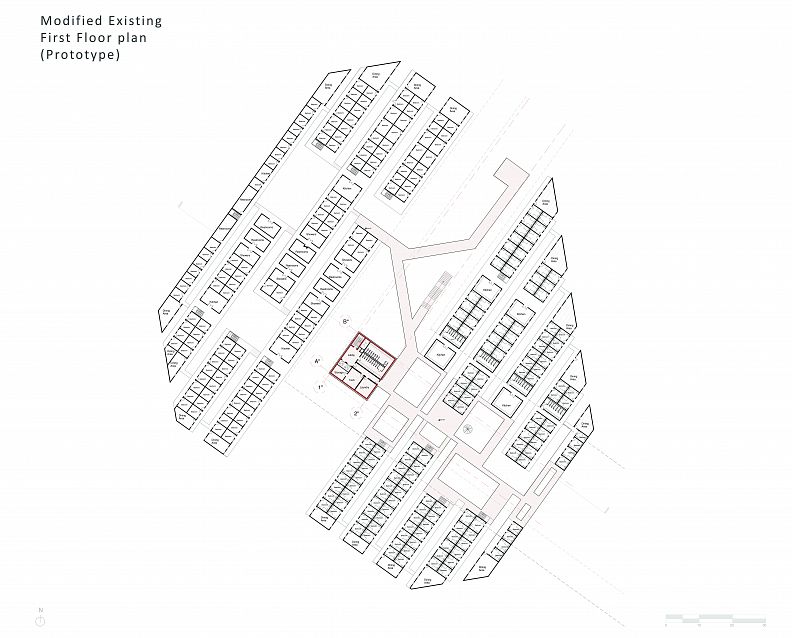COHESION - Labor Community Hub

Project idea
Once upon a luxury city was a workers' community whose living conditions were still hidden beyond the shadows of the city's glittery and shiny roads. Enduring dismally their burdensome work-life imbalance, the immigrant low-income labor workers live upon the hope of continuously sending support to their families back in their home countries. Alienated from Dubai's pleasurable facilities, alienated socially from the rest of the communities and alienated from their production, the labor community becomes the main target of the project. The project aims to bridge the gap and build a bond that fosters communal coherence, integration, and empowerment among the labor workers.
The site's gravity lies in its' centrality between one of Dubai's earliest industrial districts, Al Qouz Industrial 1, 2,3 and 4. Significantly stating itself out at the center of Al Qouz, it also marks an equidistant focal point and a significant link between the two main roads of Dubai, Sheikh Zayed Road, and Al khail Road. The site lays on Al Marabea and al Asayel Road intersection, an urban center with high significance and impact on its surroundings. It includes four plots, existing labor housing accommodations on three of its plots, and facilities and a mosque on the fourth plot.
The project design starts by enhancing the existing living accommodation through introducing courtyard spaces within the dense buildings. It fosters a sense of community through elevated walkways that bridge connections among the coupled buildings on each plot. The design reflects the character of the industrial context and relationship between the four plots. It also tackles the disconnection caused by the road intersection to create a connecting floating frame. The project functions aspire to improve the well-being of the existing labor community by incorporating spaces such as working/co-working, self development, free-time zone facilities, and a larger mosque. The massing of the form creates a physical and a visual connection with the surrounding context.
Project description
This project is the result of the Design Studio X, which included project theme selection, exploration, research, analysis, concept formation, documentation, and 3D visualization. The selection of the topic was problem-driven, trying to tackle a sensitive and significant issue in the city of Dubai. The thesis book contained 9 chapters, introducing the topic, discussing the reasons for choosing the selected topic by providing research-based data and analysis, case-studies of real-life projects that were relevant, site selection, deep site analysis, summary, and project concept proposal. The main theme targeted the labor community in Dubai and the thesis book, 'Decoding Anomie- Reconsidering the Labor Community', offers an insight on the current living conditions of the local labor community and how they are dysfunctional, offering solutions to foster the labor community's sense of existence within their social context. The book is published and could be viewed through the following link: https://issuu.com/mayaroufail/docs/decoding_anomie.
From the preliminary concept, the project had already undergone several stages transforming a mere intention of having a floating frame that connects four plots divided by a road intersection to a live, work, play, learn, pray, and self-integrate hub. Every design decision was taken using a variety of factors aimed at providing the ultimate well-being and practice of the existing labor workers. It was also designed using passive and active strategies devoted to the micro-climate of the site with a deliberate aim of achieving a sustainable design outcome. One of the major challenges entailed designing the structural components that would adequately support the floating frame and the hanging walkways while still maintaining the desired design outcome. The project dives deeper into architectural details to consider the best suitable materials and facade compositions that match the design intentions.
The design intends to integrate the project into the existing urban fabric. The intersection of the two main roads on the site creates a major pedestrian disconnection at the center of an existing labor-community housing area. The design perceives this disconnection as a critical concern in alienating and dividing the existing labor community. The elevated walkways add a new pedestrian layer to the plot aiming to bring existing residents together.
The link to my project on Behance is the following:
https://www.behance.net/gallery/95700291/COHESION-Labor-Community-Hub
Technical information
The site is characterized by a 45-degree angular orientation, with a dense urban fabric and low to mid-rise buildings. The four plots of the site are separated by the intersection of two major roads limiting connectivity and pedestrian circulation.
The creation of the form comes in response to the intended functionality, the day-lighting, the ventilation, the scale, and the urban fabric. It starts by creating courtyard spaces and porosity for reducing the density and creating intimacy. Then comes the formation of the frame shading the underneath spaces. The narrow sides form the co-working/light industrial zone, while the wider ones form the free-time zone facilities, commercial-mosque, and community service. The form pealing off from the frame is the mosque which provides access to the roof through an opening on its upper floor. The roof reaches the ground level through a ramp sloping side by the mosque. Some of the punctures in the frame are completely hollow while others house courtyard spaces, a large sloping garden, and cricket fields.
The modified existing labor housing views show the level of intimacy created by the shaded semi-public spaces with in the existing labor housing. Hanged elevated walkways bridge connections from one part of the building to the other, fostering a sense of community among the labor workers.
The hub center bird's eye views show the focal point of the project, the meeting and the synergy of a wider community. The roof, accessible from the ground, through spaces within the frame and across the upper floor of the mosque, becomes the wider landscape where various views and visual connections are established with the spaces underneath.
The night aerial view shows the importance of night-lighting in enhancing the experience of the users by providing intimacy, security and visual attraction to bring the community together.
The project uses passive and active design strategies to enhance the quality of experience and reduce energy consumption. These strategies include, ventilation, day-lighting, shading, vegetation, evaporative cooling and the use of solar energy.
Within the ramp views, as the users go up or down the ramp near the mosque, the experience is purified and refreshed with a running water feature underneath.
Shown in the sloping interior views, the descending parts of the frame are optimized functionally and aesthetically through the provision of an auditorium and a library. Day-lighting distribution plays an important part in both spaces, lifting the mood and the experience of the users.The auditorium is flexible in case lighting is not preferred, indoor greenery by its side filters light, and blocks direct sun access.
Visible on the left part of section A, is the large garden sloping down from the roof to the interior of the frame, a space for the practice of agriculture, the experience of heavy greenery and the way to get to the roof.
The internal circulation/working part views show the working area, and the elevated circulation path that runs continuously on the outer sides of the frame, optimizing the space between the slanting outer walls and the interior.
The facade detail shows how the structural, functional and aesthetic composition come together to create a sustainable outcome, through ventilation, distributed day-lighting, and pollution and noise filtration. The ceiling is finished with a light color to maximize reflection and distribution of day-lighting to the inner spaces. The structure is basically composed of main beams, secondary beams, and sub-structural framing.
The mosque, contrasting the frame with its brownish-red perforated metal mesh covering solid walls, is deformed and oriented towards the direction of Mecca. It's bottom corner, oriented southwest, is dragged up highlighting the qibla wall with light coming through translucent glass. In its interior, it is composed of three levels, the ground-level for males, the upper level for females, and the last is the entrance lobby from the roof of the frame. Light filters in from the roof to the interior through hollow and solid variations created by a grid of supporting structural beams.
Porosity is an important factor that is evident throughout all the floor plans.
The selected project materials articulate the architectural form, enhancing the experience of the users. The frame's top and bottom are enveloped with GRFC (glassfibre Reinforced Concrete) panels in light gray color. The frame's outer side is finished with a perforated metal mesh to filter light through and avoid pollution and road noise dispersion. The inner walls of the frame are finished with glass, in a double glazing composition, to establish transparency and visual connections with the other sides of the frame. However, the mosque rising from the frame is treated differently in a brownish-red perforated metal as a contrast to accentuate the idea of a part being cut and peeled off from the frame. The elevated walkways connecting the existing buildings speak out their own identity in a carbon steel woven and welded wire mesh painted with brownish-red.The Pylons rise up covered with tempered U-glass giving a lighter visual -effect.


